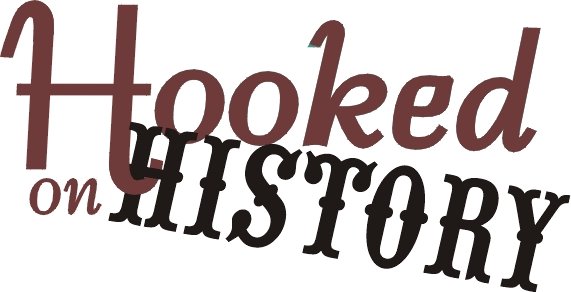United States Holocaust Memorial Museum Launches Major Exhibition State of Deception: The Power of Nazi Propaganda
"Propaganda is a truly terrible weapon in the hands of an expert." -- Adolf Hitler, Mein Kampf, 1924
/PRNewswire-USNewswire/ -- The Nazi Party developed a sophisticated propaganda machine that deftly spread lies about its political opponents, Jews and the need for war. But Nazi propaganda was much more complex than that. For the Nazis to achieve power and pursue their racial policies and expansionist war efforts, a much more nuanced picture had to be painted -- one that would appeal to broad swaths of the population, not just a fanatical extreme. The United States Holocaust Memorial Museum's groundbreaking new exhibition, State of Deception: The Power of Nazi Propaganda, shows how the Nazis employed propaganda to acquire power and help pave the way for war while creating a climate of hatred, suspicion and, most importantly, indifference that facilitated the elimination from society of Jews and others deemed undesirable by the Nazi state.
"We often assume that the Nazis sold exclusively hate," says Museum Director Sara J. Bloomfield. "In reality, they also promoted an agenda of freedom, unity and prosperity that many found alluring. The Nazis' keen understanding of mass communications and ability to exploit the Germans' hopes and fears offer lessons for us today as we live in a world of instantaneous communications and are targeted with more information than ever before."
Featuring rarely seen artifacts, State of Deception draws visitors into a rich multimedia environment vividly illustrating the insidious allure of much of Nazi propaganda. The exhibition will run through December 2011 and is part of a larger Museum initiative on propaganda that features a dynamic, interactive Web site, a richly illustrated book, outreach programs for media professionals and public presentations. More information is available at www.ushmm.org/propaganda.
State of Deception reveals how shortly after World War I, the Nazi party began to transform itself from an obscure, extremist right-wing group into the largest political party in democratic Germany. Hitler early on recognized how propaganda, combined with the use of terror, could help his extremist party gain mass support and votes. He personally adapted the ancient symbol of the swastika and the emotive colors of red, black and white to create the movement's flag. In doing so, Hitler established a potent visual identity that has branded the Nazi party ever since.
"Adolf Hitler was an avid student of propaganda, who borrowed techniques from the Allies in World War I, his Socialist and Communist rivals, the Italian Fascist Party as well as modern advertising," says State of Deception curator Steven Luckert. "Drawing upon these models, he successfully marketed the Nazi party, its ideology, and himself to the German people."
After seizing power, the Nazi Party took over all communications in Germany. It marshaled the state's resources to consolidate power and relentlessly promote its vision of "racially pure," utopian Germany that needed to defend itself from those who would destroy it. Jews were cast as the primary enemies, but others, including Roma, homosexuals, Jehovah's Witnesses and the mentally and physically handicapped, were also portrayed as threats to the "national community."
As Germany pushed the world into war, Nazi propaganda rationalized Germany's territorial expansion as self-defense. Jews were depicted as agents of disease and corruption. The Nazis' actions against them, in Germany and occupied countries, were promoted as necessary measures to protect the population at large.
The exhibition closes by examining the Allied postwar efforts to purge Germany of Nazi propaganda. In the aftermath of the Nazi defeat, limitations on speech were established in Germany and other European countries. Two Nazi propagandists, Julius Streicher, editor of Der Sturmer, a viciously anti-Semitic newspaper, and Hans Fritzsche, head of the Radio Division of the German Ministry of Propaganda, stood trial at the International Military Tribunal at Nuremberg for crimes against humanity, specifically for inciting the hatred that led to the persecution and murder of Europe's Jews. Streicher was found guilty and was executed. Fritzsche was acquitted.
In 1948, the United Nations adopted the Convention on the Prevention and Punishment of the Crime of Genocide, which criminalized, "direct and public incitement to genocide," and since then propagandists have been charged under this statute. The Streicher and Fritzsche trials served as important legal precedents in the International Criminal Tribunal for Rwanda in the 2003 "Media Trial." Today, some assert that statements made by Iranian President Mahmoud Ahmadinejad concerning Israel, for example, his call to "wipe Israel off the map," constitute incitement to genocide under the 1948 Convention. Others say the legal criteria for prosecution have not been met.
Entry to State of Deception is free, and no passes are required. The exhibition runs through December 2011, in the Kimmel-Rowan Gallery on the Museum's lower level. Visitation information can be found at the Museum's Web site, www.ushmm.org.
A living memorial to the Holocaust, the United States Holocaust Memorial Museum inspires citizens and leaders to promote human dignity, confront hatred and prevent genocide. Federal support guarantees the Museum's permanent place on the National Mall, and its far-reaching educational programs and global impact are made possible by the generosity of donors nationwide.
-----
www.fayettefrontpage.com
Fayette Front Page
www.georgiafrontpage.com
Georgia Front Page


No comments:
Post a Comment